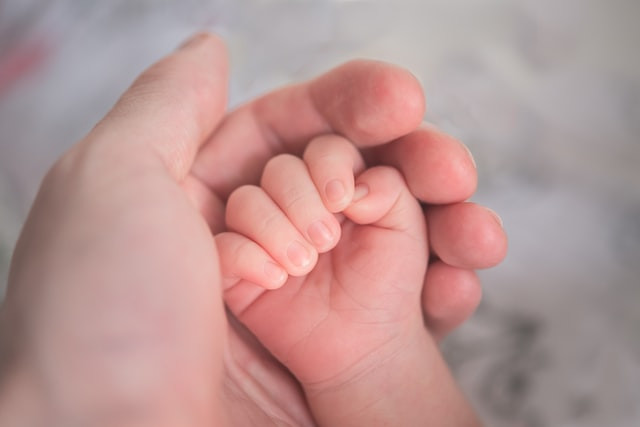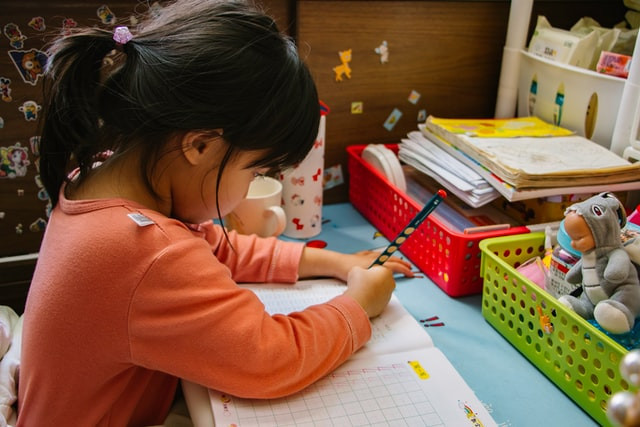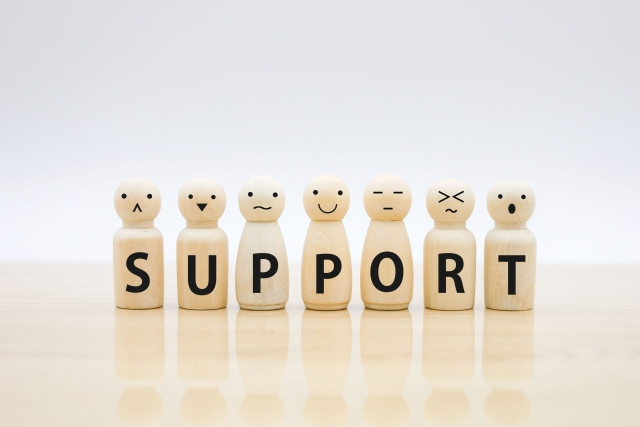It’s important to have all the information and resources available for those who want to have and raise children in Japan. There’s support available from the government as well, provided through the municipality in which you live, so it’s important to look into it. We introduce key points to know.
For such people, the Ministry of Health, Labor and Welfare organizes information related to pregnancy, childbirth, and childcare in Japanese, and also translates and discloses information in foreign languages. In addition, relevant information is introduced in the "Life and Employment Guidebook" of the Japan Immigration Services Agency. In this article, we introduce these materials and look at the main contents of the information you need to know.
Table of Contents
- Flow from Pregnancy to Childbirth in Japan
- Sending Your Child to Daycare (Nursery School) in Japan
- Education Expenses after Elementary School in Japan
- Reference Materials and Resources
Flow from Pregnancy to Childbirth in Japan

Pregnancy
Report pregnancy
Once your pregnancy is confirmed, report it to your local municipal office with a pregnancy notification. Once you do, you can receive a Maternal and Child Health Handbook (maternity handbook), examination tickets necessary for pregnancy health examinations (basically 14 health examinations and 1 ultrasound), and you will be informed about home visits from a healthcare professional (free), parenting classes (free for both parents), etc.
Pregnancy Health Checkup
Using the ticket received after reporting your pregnancy, you will receive a health checkup and prepare for childbirth - of which you are responsible for only part of the cost.
It is recommended that you be tested at the following frequency:
-
Once every 4 weeks until 23rd week of pregnancy
-
Once every 2 weeks during the 24th to 35th week of pregnancy
-
Once a week from the 36th week of pregnancy to childbirth
Childbirth
Procedures for lump-sum payment for childbirth (before childbirth)
In Japan, childbirth usually costs between 400,000 and 600,000 yen. If you are enrolled in health insurance, 420,000 yen will be provided as a "lump-sum payment for childbirth". But in order to receive it, you need to fill out forms and follow procedures at the hospital where you or your spouse plan to give birth.
Childbirth Allowance
If a person with health insurance takes a break from work due to childbirth and is not paid during that time, a childbirth allowance can be paid for the period of absence from the company within the period of 42 days before the (expected) date of childbirth to 56 days after the date of childbirth. This does not apply if wages are paid and is more than the childbirth allowance (However, if the wages paid are less than the childbirth allowance, the difference can be received).
Moderate work during pregnancy, pre- and post-natal leave, parental leave
Workers who are pregnant can request the company to:
- switch to light work during pregnancy
- ensure that working hours per week or per day do not exceed the statutory hours, and
- not work overtime, work on holidays, or work late at night.
In addition, depending on your wishes, you can apply for pre-natal leave for 6 weeks (14 weeks in the case of multiple births (e.g. twins)) before the expected date of childbirth, and you can take postpartum leave without working for 8 weeks after giving birth.
Either parent can take parental leave until the child is 1 year old (up to 2 years old depending on conditions).
Giving Birth
When you are hospitalized for childbirth, you will need the Mother and Child Health Handbook, health insurance card, personal seal, and a medical examination ticket from the hospital you will be hospitalized in.

Registering the Birth
Within 14 days of the date of birth, one of the parents needs to submit the birth notification form (出生届 shusshou todoke), to the local municipal office. In general, a birth certificate (issued by a medical institution), the maternal and child health handbook, and the couple's passports are required. The required documents can be confirmed if you check with your local municipal office.
Medical Expenses for Children
The target age varies depending on the local government, but most medical expenses are exempted until elementary school graduation. You will need a health insurance card with your child's name on it to apply.
Application for Child Allowance
Although there are income conditions, this allowance is paid to guardians until graduation from junior high school (for children up to March 31st after their 15th birthday). If you apply to the local government within 15 days from the day after birth, you can receive it from the following month (4 months' worth up to the previous month's worth is received in a lump sum in June, October, and February every year).
- Under 3 years old: 15,000 yen per month
- Ages 3 and up - 10,000 yen per month*
*Varies if you have 3 or more children who apply to the conditions
Embassy/Immigration Bureau Procedures
・Acquire the citizenship of the child at the embassy and apply for a passport. If both parents are foreign nationals, the child cannot acquire Japanese nationality even if the child was born in Japan. At this time, the birth is registered in the home country.
・Acquire a status of residence and residence card at the Immigration Bureau within 30 days of the date of birth. (If you do not obtain the status of residence within 60 days of the date of birth, your certificate of residence will be deleted and you may not be able to receive administrative services such as health insurance and child allowance.)
Newborn visits, health checkups and vaccinations for infants, baby food classes, etc.
Within 28 days of the date of birth, a healthcare professional will come to your home to check the health of the baby and mother (free of charge). After that, health checkups are provided for free at ages 18 months and 3 years old.
Certain vaccines recommended by the municipality are provided for free, while voluntary ones must be paid by the family. Check the list and recommended timing of vaccines here (pink is free, blue is voluntary).
Weaning classes when the child is around 5 to 6 months are also provided for free.
If your child is sick, you can call an ambulance at the emergency number 119. It is operated by the local government and is free.
Writer's Pick
Sending Your Child to Daycare (Nursery School) in Japan

Types of facilities and admission conditions for children before entering elementary school (age 6 or younger)
Basically, it’s largely divided into nurseries (daycare centers), kindergartens, and certified children's centers.
Nursery School (保育所; Hoikujo)
A facility that provides childcare on behalf of guardians who are unable to take care of their children (ages 0 to 6 years old) due to work or other reasons. In general, childcare is provided for 8 hours a day, but some nursery schools provide childcare outside of those hours, such as at night or on holidays.
You must apply to the local government to the childcare center of choice and be approved.
The cost of childcare varies according to the municipality, household income, number of children, and age. According to the results of the 2018 survey by the Ministry of Health, Labor and Welfare, the fees for using licensed childcare facilities (including meal fees and time extension fees) are as follows:
| Average per month | Highest rates per month | |
|---|---|---|
| 0 to 2 years old | 30,000 to 32,000 yen | 50,000 yen |
| 3 to 6 years old | 25,000 to 26,000 yen | 30,000 yen |
※Ministry of Health, Labour and Welfare, “Summary of 2018 Local Child Welfare Project Survey Results (pdf)” p.10
Kindergarten (幼稚園; Youchien)
This is a facility that generally provides education for children between the ages of 3 and 6 for 4 hours a day. There are also kindergartens that can be used early in the morning, in the evening or at night when parents are working.
For your reference, according to the 2018 Ministry of Education, Culture, Sports, Science and Technology (MEXT) survey of educational expenses for children, the annual educational expenses of kindergartens, public and private, are as follows. This amount includes education expenses, meal expenses, and after-school activity expenses.
| Average per year | Average per month | |
|---|---|---|
| Public kindergarten | 223,647 yen | 18,000 yen |
| Private kindergarten | 527,916 yen | 43,000 yen |
※Ministry of Education, Culture, Sports, Science and Technology, “Results of 2018 Children's Study Expense Survey”
Center for Early Childhood Education and Care (Nintei Kodomoen)
It has the functions of both nursery schools (childcare) and kindergartens (education), and can be used even when parents are not working. Facilities that meet the accreditation standards can be accredited by the prefecture. In some cases, nursery schools and kindergartens are certified as centers for early childhood education and care. There are many different types for each municipality.
※Cabinet Office, “Overview of Certified Early Childhood Center”
Education Expenses after Elementary School in Japan

Elementary school students in Japan can play and study with their friends in after-school children's clubs and after-school children's classes when offered.
How about the cost of education?
The total amount of tuition for public/private elementary, middle, and high schools was surveyed as follows. This amount includes education expenses, meal expenses, and after-school activity expenses.
| Public Annual Tuition | Private Annual Tuition | |
|---|---|---|
| Elementary school | 321,281 yen | 1,598,691 yen |
| Junior high school | 488,397 yen | 1,406,433 yen |
| High school | 457,380 yen | 969,911 yen |
※Ministry of Education, Culture, Sports, Science and Technology, “Results of 2018 Children's Study Expense Survey”
In the case of universities, according to the Ministry of Education, Culture, Sports, Science and Technology's Study on Tuition Fees, etc., tuition fees by national/public/private universities are as follows (at the time of the 2020 survey):
| Annual Tuition | Admission Fee | |
|---|---|---|
| National | 535,800 yen (standard) | 282,000 yen |
| Public | 536,382 yen (average) | 392,111 yen |
| Private | 927,705 yen (average) | 247,052 yen |
※Ministry of Education, Culture, Sports, Science and Technology, “Survey results for student fees, etc. for new students enrolled in private universities in 2020”“Trends in tuition fees for national, public, and private universities (pdf)”
Reference Materials and Resources

When trying to give birth and raise a child in Japan, especially as a foreign national you may be anxious about whether you will be able to understand the support system that is different from your country. The Japanese government has established various support systems through local governments, and provides consultations at any time as needed. Multilingual materials are also available, so please use them if you want to raise a child in Japan.
-
“Supporting Safe Pregnancy, Delivery and Child-rearing” Guidebook in English (Ministry of Health, Labour and Welfare)
-
Chapter 4 (Childbirth and Parenting) & 5 (Education) in the “Guidebook on Living and Working ~ For foreign nationals who start living in Japan ~” in English (Immigration Services Agency)
-
Your local municipality office website
-
Your local Family Support Center
We hope that you will be aware of the cost of each stage, such as pregnancy, childbirth, childcare, and education after elementary school, and make the most of available services to lead a healthy and happy life in Japan.





















.jpg)














